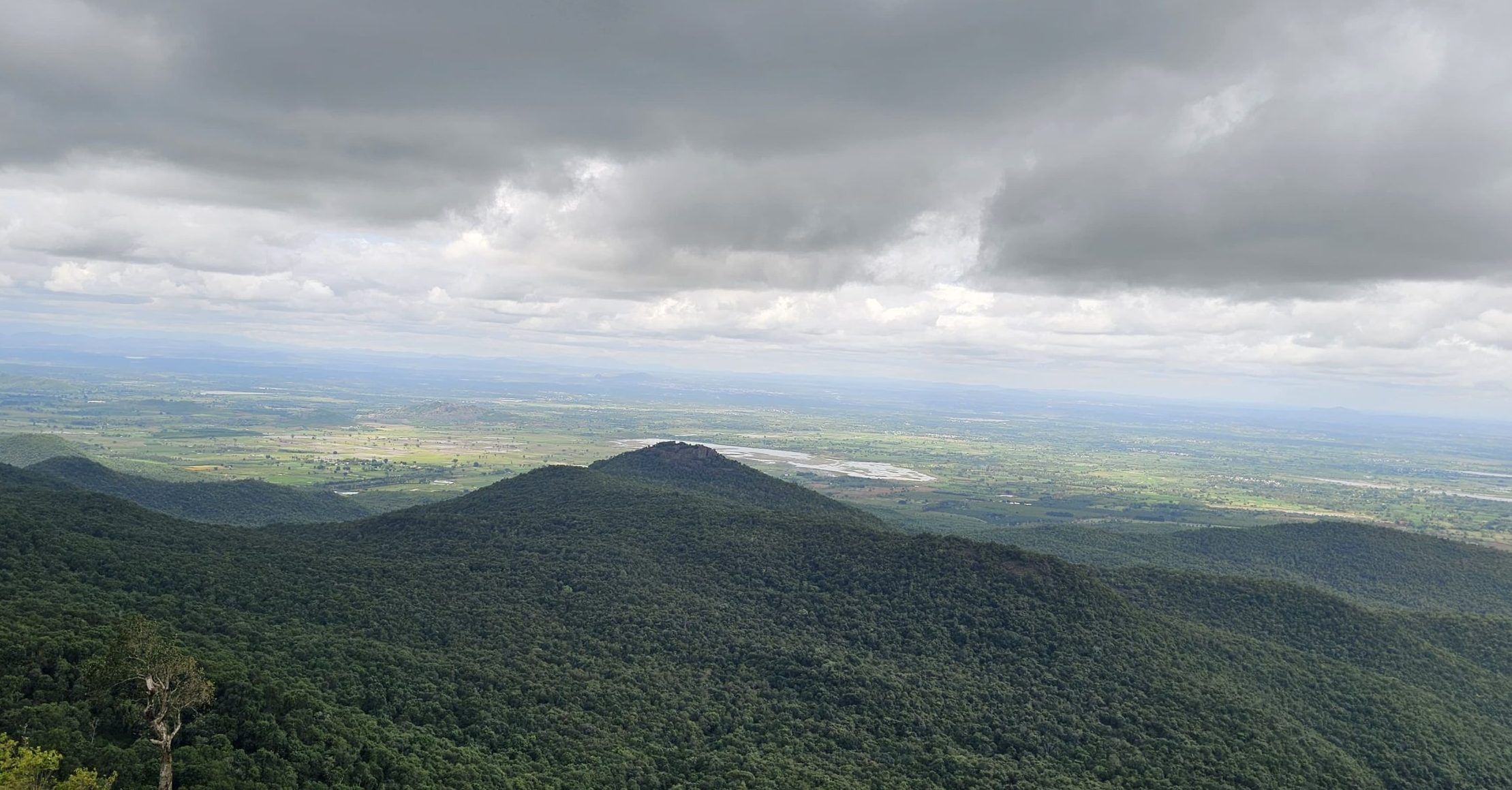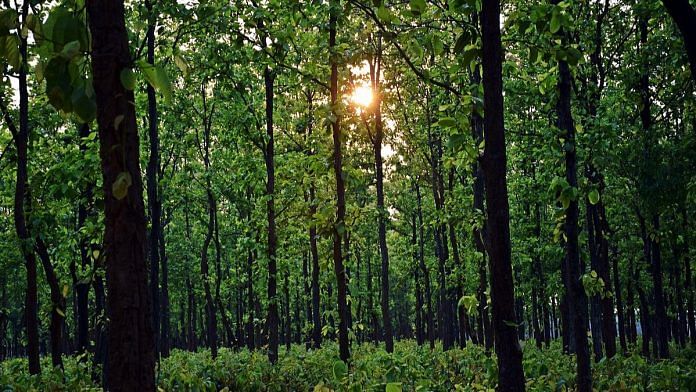Bengaluru: The central government’s first attempt to assign asset value, condition, and ecosystem services to India’s forests hasn’t gone down well with conservators and experts who are now pointing holes in the approach taken to census India’s green cover. Last month, MoSPI released its Environmental Accounting on Forest 2025 report in two volumes, describing it as a “pioneering effort”.
The report claims to fill a critical data gap by quantifying the “natural capital” that sustains both India’s economy and ecology.
Yet conservationists and former forest officials say the new accounting overlooks key ecological realities. It inherits the same weaknesses of the India State of Forest Report (ISFR), the biennial exercise by the Forest Survey of India. The ISFR remains silent on fragmentation — scientifically accepted as the major cause of biodiversity loss — and entirely omits the vast forest area now occupied by bogus claimants under the Forest Rights Act (FRA), India’s biggest land-use change since 2008.
Real accounting, they say, must capture fragmentation from development, diversions of natural forests, and the gradual degradation following FRA allocations and intensive resource use.
“Forests are living systems, not static assets,” said Praveen Bhargav, former member of the National Board for Wildlife. “Their value lies in continuity, connectivity, and resilience — and those are exactly what need to be measured.”
Forest area vs forest cover
The MoSPI report distinguishes between forest area — legally notified land under the forest department — and forest cover, the canopy density detected by satellite imagery.
This distinction is welcome, but BK Singh, retired Principal Chief Conservator of Forests (Head of Forest Force), Karnataka, points out that the underlying data still comes from ISFR 2023, which defines forest cover as “all lands, more than one hectare in area, with a tree canopy density of more than 10 per cent, irrespective of ownership and legal status.”
The ISFR uses IRS LISS-III imagery with a 23.5-metre resolution, classifying forests as Very Dense, Moderately Dense, or Open. Such coarse resolution cannot reliably distinguish natural forests from monoculture plantations. This means that even teak, eucalyptus, coffee, or rubber estates — and even orchards — are counted as forests.

Experts note that better the resolution, better the accuracy: higher-resolution imagery such as Sentinel-2 (10 m) or PlanetScope (3 m) can capture small clearings and degraded patches far more precisely — making the data more accurate.
Unless this definition is corrected, they warn, the credibility of the entire accounting exercise will remain in question.
Also read: Forests and agriculture can thrive together. 5 Indian states show how
Fragmentation left unmeasured
Volume 1 of Environmental Accounting on Forest, 2025 lists several accounting layers of green cover — Extent, Condition, and Ecosystem Services.
The Condition account includes parameters such as regeneration, biodiversity, fire incidence, and fragmentation. But many of these are merely “reference-level indicators”, borrowed from literature rather than field-verified data.
While the report briefly defines fragmentation as the division of forests into smaller patches, it provides no measured data, no trendlines, and no connectivity maps.
Bhargav argued that by failing to track fragmentation caused by roads, power lines, and mining, the report misses what truly defines forest health.
“Fragmentation or breaking up of forests into smaller pieces is the most serious threat to biological diversity. It isolates wildlife populations, prevents genetic exchange, and leads to ecological collapse. We still do not know how many large, contiguous forest blocks remain in India — this is the critical data we need,” he said.
Forest Rights Act and disappearing forests
Perhaps the most glaring silence in Environmental Accounting on Forest, 2025 concerns the FRA. The Act, meant to correct “historical injustices” meted out to forest-dwelling communities, has also triggered one of India’s largest legal loss of forest land. It grants individual and community rights to forest-dwelling people over land they have traditionally occupied or used. While it aimed to correct historical injustice, it has also resulted in large-scale diversion and fragmentation of forest areas, posing serious challenges for ecological accounting and governance.
According to the Ministry of Tribal Affairs’ official FRA dashboard (July 2025), over 23 lakh individual rights and around one lakh community rights have been granted across the country so far. The land area vested under individual rights amounts to roughly 20 lakh hectares, while community rights extend over nearly 74 lakh hectares. Together, this adds up to almost 94 lakh hectares, now under FRA titles. It has not been accounted for at all in this report.
While community titles do not involve clearing forests, experts warn that extraction of Non-Timber Forest Produce (NTFP), grazing, and firewood collection are intensifying, leading to progressive degradation of forest wealth over time.
“It is here, particularly with respect to individual claims for habitation and cultivation, that the distinction between forest area and forest cover starkly shows up,” said BK Singh.
“While forest land vested under individual claimants and areas diverted for development continue to be counted as Recorded Forest Area in ISFR reports, forest cover within such tracts has practically disappeared.”
Also read: One Nation, One Development model won’t work for Lakshadweep, Sunderbans, says Jairam Ramesh
Carbon claims
The report’s statement that India’s forests have substantially increased their carbon retention capacity has also come under scrutiny.
Singh called the conclusion “scientifically unsound and unsupported by data. He called for MoSPI “to release all raw spatial and tabular datasets in the public domain for independent review and verification.”
“The Ministry of Statistics has shown a poor understanding of the difference between forest cover, tree cover, and recorded forest area,” he said.
“Forest cover inside notified forests is actually declining, while tree cover outside — on farms and plantations — is increasing. Yet the report claims that our carbon retention capacity has gone up without providing supporting evidence. When natural forests are shrinking, how can ecological services and carbon absorption rise?”
Singh added that the National Forest Policy speaks of achieving 33 per cent forest and tree cover, not recorded forest area, and that recorded area cannot increase without fresh notifications — something that is not occurring.
He said the forest department must publish the data and methods underpinning its carbon claim “to retain scientific credibility.”
Tejus RS is an alumnus of ThePrint School of Journalism.
(Edited by Aamaan Alam Khan)






